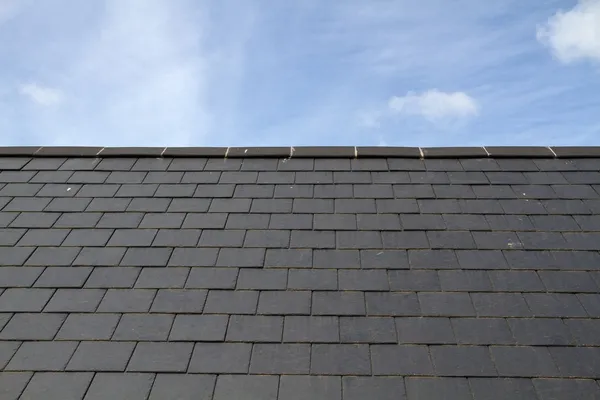Are you thinking of installing a new roof on your home or business? If so, you may wonder what roofing material is the best choice. Many different roofing materials are available, each with its advantages and disadvantages.
One popular type of roofing material is slate. Slate roofs are attractive, durable, and can last many years with proper maintenance. In this guide, we’ll discuss the different types of slate roofing, how to install a slate roof, and the benefits of choosing this type of roofing material.
What is Slate Roofing, and Why is it a Popular Choice for Roofs?
Slate roofing is a popular choice for many homeowners due to its durability and classic look. Slate is a natural stone cut into thin, flat pieces and then installed on roofs. Slate roofs can last centuries and withstand severe weather conditions, making them a very durable option. In addition, slate roofs are low maintenance and do not require much upkeep.
Slate roofing is also popular because it is environmentally friendly and sustainable. Slate roofs are made from natural materials, so they do not contribute to pollution or greenhouse gas emissions. In conclusion, slate roofing is an excellent choice for those looking for a durable, low-maintenance, and environmentally-friendly roofing option.
The Different Types of Slate Roofing
There are several different types of slate roofing, and we’ll take a closer look at the different types of slate roofing materials so that you can make an informed decision about which one is right for your home.
Natural Slate
This type of slate roofing is made from real slate stone mined from the earth. Natural slate is one of the most durable roofing materials available and can last over 100 years with proper care and maintenance. However, natural slate is also one of the most expensive roofing materials, so it’s essential to weigh the pros and cons before deciding.
Bituminous Slate
Bituminous slate is a type of asphalt-saturated felt often used as an underlayment for natural slate roofs. Bituminous slate provides an extra layer of protection against water damage and can increase the overall lifespan of your roof.
Fiber Cement Slate
Fiber cement slate is a manufactured material that resembles natural slate but is much more affordable. Fiber cement slate is made from a mix of Portland cement, sand, wood fibers, and water. Fiber cement slate roofing has many of the same advantages as natural slate roofing, but it’s not quite as durable and typically lasts only about 50 years.
Metal Slate
Metal slate roofs are made from steel or aluminum and have a 40 to 60 years lifespan. Metal roofs are fire-resistant and energy efficient but can be pretty noisy during rainstorms and hail storms.
Concrete Slate
Concrete slate roofs are made from a mix of Portland cement, sand, water, and sometimes fiber reinforcement. Concrete roofs are incredibly durable and can last over 100 years with proper care and maintenance. However, concrete roofs are also very heavy and can require special reinforcements to support the extra weight.
Composite Synthetic Slate
Composite synthetic slate is made from a blend of plastic polymers and rubberized asphalt. Composite synthetic slate looks very similar to natural stone but costs much less. Composite synthetic slate roofs typically last for about 30 years before they need to be replaced.
How to Install a Slate Roof?
A slate roof is a beautiful and durable addition to any home. If you are considering installing a slate roof, you should know a few things. Here is a step-by-step guide on how to install a slate roof.
Fixing With Nails
The first step is to fix the slates in place with nails. You will need to use special roofing nails made of copper or galvanized steel. Drive the nails into the center of the slate at a 30-degree angle. Ensure the nails are long enough to penetrate the slate and the sheathing beneath.
Fixing With Hooks
Another method of fixing slate roofs is by using hooks. This method is often used on larger slates or when additional support is needed. To install hooks, first, predrill holes into the slate. Next, hammer the hooks into place. Make sure the hooks are not too close to the edge of the slate, as this can cause it to crack.
Machine Holing
Machine holing is another method that can be used to install slate roofs. This method is often used on smaller slates or when speed is of the essence. To machine holes, use a hand-held power drill fitted with a carbide-tipped masonry bit to drill holes into the center of each slate. Make sure the holes are large enough for half-inch diameter nails.
The Benefits of Slate Roofing
There are many benefits to choosing slate roofing for your home. Here are just a few:
- Longevity: Slate roofs can last for decades, or even centuries, with proper maintenance and care.
- Durability: Slate is a durable material that can withstand extreme weather conditions and resist damage from falling branches or hail.
- Low Maintenance: Unlike wood shingles, slate does not need to be treated or repaired often.
- Attractiveness: Slate roofing adds a unique, sophisticated look to any building.
- Environmentally Friendly: Slate is a recyclable natural material that does not contribute to air pollution during manufacturing.
Overall, slate roofing offers many advantages for homeowners looking for a long-lasting, low-maintenance roofing option with aesthetic appeal. Be sure to weigh all your roofing options and consult with professionals like us at Trojan Roofing before making a decision.
Trojan Roofing: Top Roofing Services Provider in Indianapolis
We hope this guide has helped in your understanding of slate roofing. If you are considering a slate roof for your home, contact us at Trojan Roofing to learn more about our top-quality roofing services. Our experienced professionals can assist you with all your roofing needs and ensure the job is done correctly and efficiently. Call us today for a free estimate.

